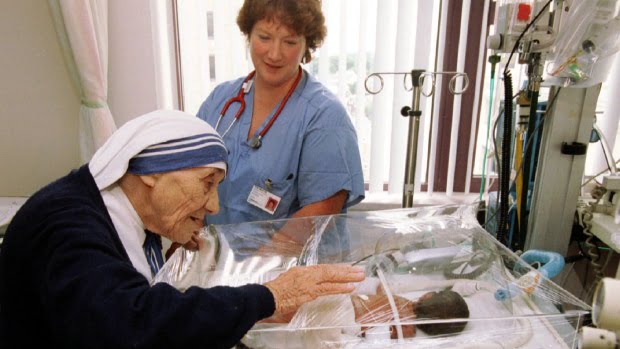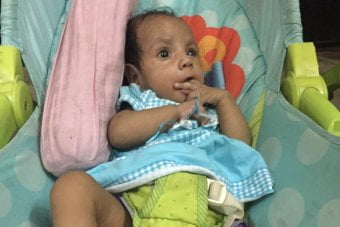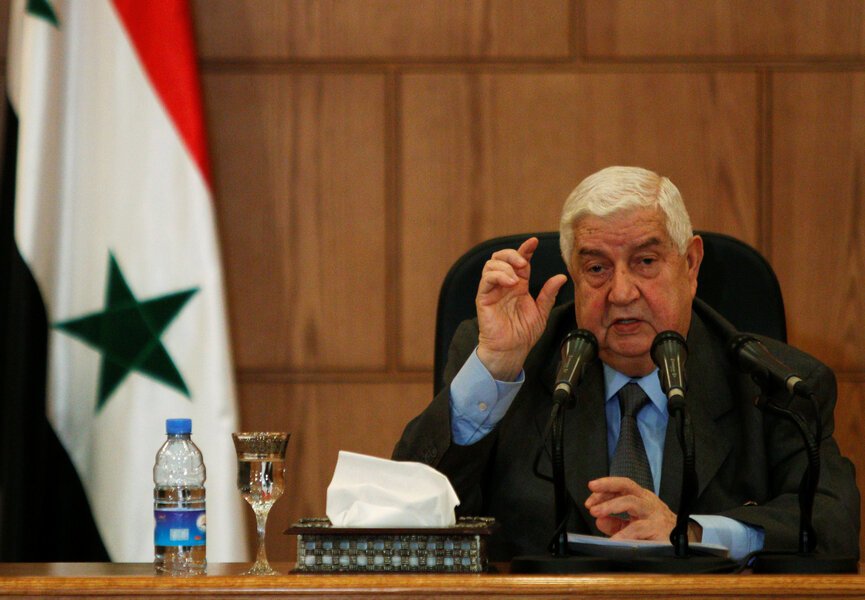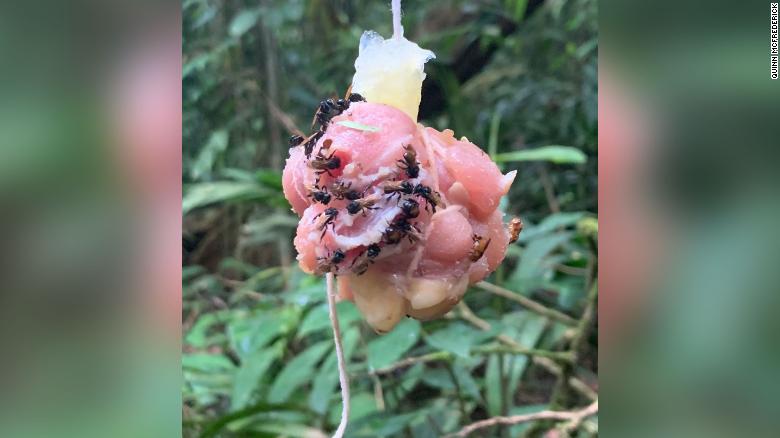

Mother Teresa of Calcutta, a nun who dedicated her life to helping the poor, will be made a saint of the Roman Catholic Church at a ceremony on Sunday.
She began her charitable work over 50 years ago in the slums of Calcutta, India’s poorest and most populous city, and she went on to touch the hearts of people around the world.
Mother Teresa was born Agnes Goinsha to Albanian parents in Skopje, in what was then part of the Ottoman empire and is now Macedonia, on Aug. 26, 1910.

Mother Teresa is seen during a 1995 trip to Belgium. (Reuters)
In 1929, she travelled to Calcutta as an 18-year-old novice of the Loretto order and taught geography at a convent school.
Twenty years later, she opened her first school in the Calcutta slums. There she founded her order of Missionaries of Charity, which ran homes for the victims of neglect, poverty and disease throughout the world.
Her compassion reached out to slum-dwellers, famine victims and AIDS sufferers, and won her the Nobel Peace Prize in 1979.
She has been honoured by many world and religious leaders including the Pope John Paul II, former Indian Prime Ministers Indira Gandhi and Narasimha Rao, and British Queen Elizabeth, who awarded her one of the country’s highest honours, the Order of Merit.
Raised money for famine relief
In 1985, she joined forces with Irish singer and political activist Bob Geldof to promote a worldwide campaign for famine-stricken Ethiopia, and in August 1989 she personally helped evacuate handicapped children from war-ravaged Beirut.
During a trip to her parents’ homeland in 1991, Mother Teresa took part in a service to reconsecrate a Roman Catholic Church in Tirana which had been closed by communist authorities in 1967.
In December 1991, while on a world tour of her missions, Mother Teresa suffered a heart attack and underwent surgical treatment in California for life-threatening heart and lung ailments. After a final health check in Rome’s Salvator Mundi Clinic she returned to Calcutta.
Following Hindu-Moslem riots in India in December 1992, during which at least 1,200 people were killed, Mother Teresa prayed for peace and harmony at the New Delhi memorial to Mahatma Gandhi, the leader of India’s peaceful independence movement.
In June 1993, she made a return visit to Dublin in the Irish Republic, where she was a novice nun during the 1920s, and met Irish President Mary Robinson.
Although she resigned as Mother Superior from her religious order in 1990 due to failing health, Mother Teresa continued her efforts to help the poor worldwide, winning the Soviet Land Nehru award in November of that year, the Bharat Ki Mahan Suputri (India’s Great Daughter) award in November 1992, and the UNESCO (United Nations Educational, Scientific and Cultural Organisation) Peace Education Prize in December 1993.
Active into her 80s with health setbacks
In October 1994, she took part in a rally in St. Peter’s Square attended by Pope John Paul II to commemorate the Roman Catholic Church’s International Year of the Family and the following year in a special 85th birthday message called upon people to love one another and have faith in God.

Mother Teresa and Pope John Paul II wave to well-wishers in Calcutta on Feb. 3, 1986. (Michel Scotto/AFP/Getty Images)
Shortly before her 86th birthday in August 1996, Mother Teresa was admitted to the Woodlands Nursing Home in Calcutta suffering from heart failure, malaria and pneumonia.
Although gravely ill, she responded to intensive care treatment and at her own request was released from hospital in time to celebrate the 50th anniversary of the founding of her religious order on September 10, 1996. The occasion was to mark “Inspiration Day,” the day 50 years earlier when the Nobel Peace laureate said she received direction from God to work for the poor and destitute.
In March 1997, the order elected Sister Nirmala to succeed Mother Teresa as the leader of the Missionaries of Charity.
A former Hindu Brahmin who converted to Roman Catholicism, Sister Nirmala was named the new Superior General following an eight-week selection effort ending with a closed-door vote by 132 senior nuns. Mother Teresa retained her title “Mother,” but handed over her administrative powers to her 63-year-old successor.
At a Vatican audience in May 1997, Mother Teresa introduced her successor to Pope John Paul II, joking that she was finally a free woman at the age of 86.
Dependent on her leadership and ability to attract funds, the order had twice refused to bow to Mother Teresa’s wish to step down.
U.S. visit shortly before death
In June 1997, Mother Teresa travelled to Washington to receive the Congressional Gold Medal, the highest honour awarded by the United States Congress. Before presenting her with the award, the then Speaker of the House of Representatives Newt Gingrich said Mother Teresa’s life demonstrated that “the humble can be famous, the weak can be powerful, the meek can have strength and that love can overcome hate.”
Following the award ceremony, Mother Teresa went on to tour residencies of the Missionaries of Charity in the United States.
While at the South Bronx residency in New York, she received a visit from Diana Princess of Wales.
- John Paul ll, John XXIII become Roman Catholic saints
After a meeting indoors, Mother Teresa, who appeared fit and well, and the princess walked outside where they were greeted by a crowd of well-wishers.
The Vatican said the ceremony of Mother Teresa’s canonisation would take place at the Vatican, dashing hopes of Indians that Pope Francis would travel to Kolkata, as Calcutta is now called, to perform the ritual.
[Source:-CBC News]





